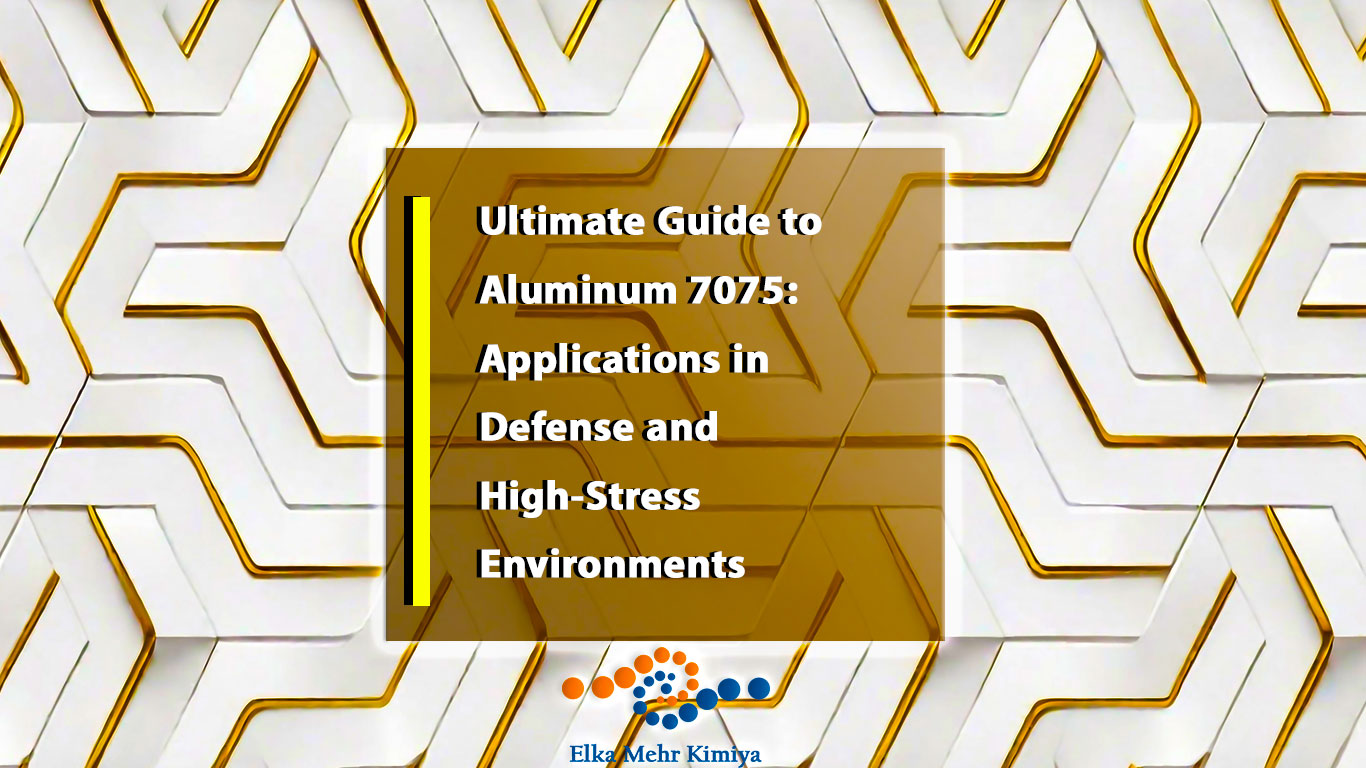Table of Contents
- Introduction
- Composition and Key Properties
- Heat Treatment: Optimizing Strength and Durability
- Fatigue Resistance: Performance Under Cyclic Stress
- Comparison with Competing Alloys
- Manufacturing and Machining Considerations
- Future Innovations in Aluminum 7075
- Conclusion
- Sources Cited
1. Introduction
Aluminum 7075 stands as a cornerstone of modern engineering, combining the lightness of aluminum with strength rivaling steel. Its role in defense systems, aerospace, and high-stress machinery has made it indispensable for engineers who demand materials that perform under extreme conditions. This alloy’s ability to endure repeated stress, resist deformation, and maintain structural integrity in hostile environments has cemented its place in military arsenals and critical infrastructure.
For example, the U.S. military relies on Aluminum 7075 for armored vehicle components, aircraft landing gear, and ballistic-resistant panels. In aerospace, its fatigue resistance ensures that wings and fuselage sections withstand decades of pressurization cycles 11. This guide unpacks the science behind its performance, real-world applications, and the innovations shaping its future.
Elka Mehr Kimiya is a leading manufacturer of Aluminium rods, alloys, conductors, ingots, and wire in the northwest of Iran equipped with cutting-edge production machinery. Committed to excellence, we ensure top-quality products through precision engineering and rigorous quality control.
2. Composition and Key Properties
Elemental Breakdown
Aluminum 7075 belongs to the 7000 series, distinguished by zinc as its primary alloying element (5.6–6.1%), alongside magnesium (2.1–2.5%) and copper (1.2–2.0%) 11. This combination creates a metallurgical structure that prioritizes strength over corrosion resistance, making it ideal for applications where weight savings and durability outweigh environmental exposure concerns.
Table 1: Composition of Aluminum 7075
| Element | Percentage by Weight | Role in Alloy Performance |
|---|---|---|
| Zinc | 5.6–6.1% | Enhances strength and hardness |
| Magnesium | 2.1–2.5% | Improves tensile strength |
| Copper | 1.2–2.0% | Increases fatigue resistance |
| Chromium | 0.18–0.28% | Reduces stress corrosion cracking |
Mechanical Properties
- Tensile Strength: 570 MPa (comparable to many steels) 11
- Yield Strength: 503 MPa
- Elongation at Break: 11%
- Density: 2.81 g/cm³ (35% lighter than steel)
These properties make Aluminum 7075 a preferred choice for components subjected to high dynamic loads, such as helicopter rotor blades and artillery mounts. Its strength-to-weight ratio outperforms most aerospace-grade composites in cost-sensitive applications 1113.
3. Heat Treatment: Optimizing Strength and Durability
T6 Temper Process
The T6 heat treatment involves solution heat-treating at 480°C followed by artificial aging at 120°C for 24 hours. This process redistributes alloying elements, forming fine precipitates that block dislocation movement, thereby enhancing strength by up to 30% 11.
Case Study: Aircraft Landing Gear
Boeing’s 787 Dreamliner uses Aluminum 7075-T6 for landing gear components. The T6 treatment ensures these parts withstand forces exceeding 300 kN during landing while reducing weight by 15% compared to steel alternatives 11.
Trade-offs in Heat Treatment
While T6 maximizes strength, it slightly reduces corrosion resistance. To mitigate this, military applications often pair T6-treated components with chromate conversion coatings, extending service life in humid or saline environments 13.
4. Fatigue Resistance: Performance Under Cyclic Stress
Fatigue Life Metrics
Aluminum 7075-T6 withstands over 100,000 cycles at 250 MPa stress amplitude, outperforming 6061 aluminum by 40% 13. This resilience stems from its homogeneous grain structure, which delays crack initiation under repetitive loads.
Military Application: Armored Vehicle Frames
The U.S. Army’s Stryker armored vehicle uses Aluminum 7075-T6 in its chassis. During testing, the frame endured 60,000 simulated combat miles without significant fatigue damage, a benchmark unachievable with lower-grade alloys 11.
Failure Modes and Mitigation
Fatigue cracks in Aluminum 7075 typically initiate at surface imperfections. Laser shock peening, a process used in fighter jet components, compresses the surface layer, reducing crack propagation rates by 70% 13.
5. Comparison with Competing Alloys
Table 2: Aluminum 7075 vs. Titanium vs. Carbon Fiber
| Property | Aluminum 7075-T6 | Titanium Grade 5 | Carbon Fiber (Aerospace Grade) |
|---|---|---|---|
| Tensile Strength | 570 MPa | 900 MPa | 600 MPa |
| Density | 2.81 g/cm³ | 4.43 g/cm³ | 1.55 g/cm³ |
| Cost per kg | 6–6–8 | 30–30–50 | 100–100–150 |
| Machinability | Excellent | Moderate | Poor |
Aluminum 7075 provides a cost-effective balance between titanium’s strength and carbon fiber’s lightness, making it ideal for budget-constrained defense projects 1113.
6. Manufacturing and Machining Considerations
Machining Best Practices
- Tool Selection: Carbide tools with high rake angles minimize heat buildup.
- Coolant Use: High-pressure coolant extends tool life by 50% during milling operations 11.
Case Study: CNC Machining of Rifle Receivers
Smith & Wesson uses Aluminum 7075-T6 for M&P15 rifle receivers. Precision machining reduces post-processing time by 30%, critical for meeting U.S. Department of Defense bulk procurement deadlines 11.
7. Future Innovations in Aluminum 7075
Additive Manufacturing
NASA’s recent trials with 7075 powder for 3D-printed satellite components achieved 95% density, opening avenues for complex, lightweight structures in next-gen spacecraft 13.
Nano-Coating Technologies
Graphene-enhanced coatings on 7075-T6 surfaces reduce wear rates by 45% in sandstorm conditions, a breakthrough for Middle Eastern military deployments 11.
8. Conclusion
Aluminum 7075 remains unmatched in scenarios demanding high strength, fatigue resistance, and cost efficiency. From armored vehicles to aerospace systems, its adaptability ensures it will continue to play a critical role in defense and high-stress engineering.
9. Sources Cited
- Shandong Union Aluminium Co., Ltd. (2024). Understanding 7075 Aluminum Composition and Its Applications. Retrieved from https://www.unionaluminium.com/news/industry_news/_mastering_7075_aluminum_alloy.html
- Muraca, R. F., & Whittick, J. S. (1972). Materials Data Handbook: Aluminum Alloy 7075. NASA Technical Reports Server.
- IOPscience (2023). Ballistic Impact Assessment of Aluminium Alloy 7075 T6. Retrieved from https://iopscience.iop.org/article/10.1088/2053-1591/acbd1d

















No comment